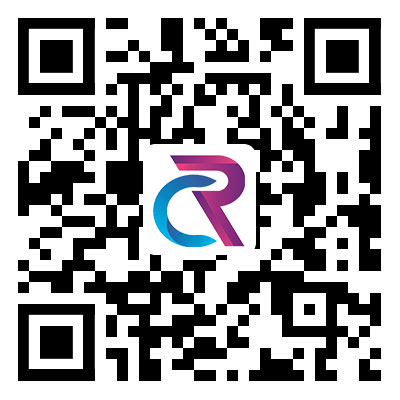 English
English Español
Español  Português
Português  русский
русский  Français
Français  日本語
日本語  Deutsch
Deutsch  tiếng Việt
tiếng Việt  Italiano
Italiano  Nederlands
Nederlands  ภาษาไทย
ภาษาไทย  Polski
Polski  한국어
한국어  Svenska
Svenska  magyar
magyar  Malay
Malay  বাংলা ভাষার
বাংলা ভাষার  Dansk
Dansk  Suomi
Suomi  हिन्दी
हिन्दी  Pilipino
Pilipino  Türkçe
Türkçe  Gaeilge
Gaeilge  العربية
العربية  Indonesia
Indonesia  Norsk
Norsk  تمل
تمل  český
český  ελληνικά
ελληνικά  український
український  Javanese
Javanese  فارسی
فارسی  தமிழ்
தமிழ்  తెలుగు
తెలుగు  नेपाली
नेपाली  Burmese
Burmese  български
български  ລາວ
ລາວ  Latine
Latine  Қазақша
Қазақша  Euskal
Euskal  Azərbaycan
Azərbaycan  Slovenský jazyk
Slovenský jazyk  Македонски
Македонски  Lietuvos
Lietuvos  Eesti Keel
Eesti Keel  Română
Română  Slovenski
Slovenski  मराठी
मराठी  Srpski језик
Srpski језик
The Magic of 3D Lenticular Printing: How It Works and Why It’s Gaining Popularity
2024-09-13
In the world of print, few techniques capture attention like 3D lenticular printing. If you’ve ever seen an image that seems to move, shift, or even pop out in three dimensions as you change your viewing angle, you’ve experienced the wonders of lenticular printing. This eye-catching effect has been used in everything from advertising and packaging to collectibles and art. But how exactly does 3D lenticular printing work, and why is it becoming a go-to option for designers and marketers? Let’s dive into the fascinating world of 3D lenticular printing.

What is 3D Lenticular Printing?
3D lenticular printing is a technique that creates images with depth, movement, or transformation effects by layering multiple images under a lenticular lens. This specialized lens is composed of a series of plastic ridges, or lenticules, which refract light in different directions. As the viewer changes their perspective, they see different images or parts of the same image in a way that mimics motion or three-dimensional depth.
Lenticular printing can produce a wide range of effects, including:
- 3D Depth: Images appear to pop out of the page with realistic depth.
- Flip Effect: Two or more images alternate as the viewing angle changes.
- Animation: The image appears to move or change, simulating motion.
- Morphing: One image seamlessly transforms into another.
How Does 3D Lenticular Printing Work?
The key to lenticular printing lies in the combination of carefully prepared images and a specialized lenticular lens. Here’s how the process works:
1. Image Preparation:
- Multiple images are sliced into strips and interlaced, or digitally merged, into a single file. For 3D effects, this often means capturing different angles of an object. For motion or flip effects, it involves different frames of an animation or separate images.
2. Lenticular Lens:
- A lenticular lens is a sheet of plastic ridges, each acting like tiny magnifying glasses. These lenses refract light at different angles, directing specific strips of the image to the viewer’s eyes based on their perspective.
3. Printing and Alignment:
- The interlaced image is printed and precisely aligned with the lenticular lens. The proper alignment is crucial to ensuring the correct image is visible from different angles.
4. Viewing:
- As you move your viewing angle, the lens directs different parts of the image to your eyes, creating the illusion of depth, movement, or transformation.
Types of Lenticular Effects
Lenticular printing isn’t limited to just 3D effects. It offers a variety of visual experiences depending on how the images are prepared:
1. 3D Depth Effect:
- This is the most well-known effect, where an object or scene appears to be three-dimensional without the need for 3D glasses. It’s perfect for adding life-like detail to images like portraits, landscapes, or product designs.
2. Flip Effect:
- This effect switches between two or more distinct images as you tilt the print. It’s commonly used in marketing materials, allowing two messages or images to be conveyed in the same space.
3. Animation Effect:
- Multiple frames of an animation are interlaced, so when the viewing angle changes, the image appears to move. This is ideal for dynamic advertisements, movie posters, or collectibles.
4. Morph Effect:
- One image gradually transforms into another, creating a smooth transition from one visual to the next. This is a popular choice for campaigns highlighting transformations or changes.
Advantages of 3D Lenticular Printing
1. Captures Attention:
- The stunning visual effects of lenticular printing naturally draw the eye. Whether it's a 3D pop-out effect or a flip between two images, viewers are likely to pause and take a closer look.
2. Memorable and Engaging:
- Lenticular prints leave a lasting impression on viewers due to their interactive and dynamic nature. This makes them ideal for marketing materials, packaging, and promotional products where grabbing attention is crucial.
3. Versatile Applications:
- Lenticular printing can be used in a wide range of applications, from posters and business cards to product packaging and book covers. The technology is adaptable to different materials, sizes, and forms, making it a flexible choice for creative projects.
4. Enhances Brand Appeal:
- Companies looking to stand out can use lenticular printing to give their branding a modern, high-tech edge. The unique effects communicate innovation and creativity, enhancing brand perception.
Common Uses of 3D Lenticular Printing
3D lenticular printing has a wide range of applications across various industries:
1. Advertising and Marketing:
- Lenticular printing is frequently used in advertising materials like posters, billboards, and product displays. The eye-catching nature of the images helps marketers convey multiple messages or create an interactive experience for viewers.
2. Product Packaging:
- Brands use lenticular printing on packaging to make their products stand out on store shelves. The motion or 3D effects can demonstrate product features or simply make the packaging more engaging.
3. Collectibles and Memorabilia:
- From movie posters to trading cards, lenticular printing is a favorite for creating collectible items. The dynamic effects add value and appeal, making the items more desirable for fans and collectors.
4. Educational Tools:
- Lenticular prints are also used in educational settings, particularly in science or anatomy illustrations. The 3D effect helps create visual depth for subjects like space, the human body, or geography.
5. Art and Photography:
- Artists and photographers use lenticular printing to create pieces that offer new perspectives or dynamic storytelling. The technology enables them to push the boundaries of visual expression.
3D lenticular printing is a powerful technique that combines science and creativity to create stunning visual effects. Whether it’s making an object appear three-dimensional or creating dynamic animations on a flat surface, lenticular printing opens up new possibilities for designers, marketers, and artists. Its ability to capture attention and engage viewers makes it a growing favorite in industries ranging from advertising and packaging to collectibles and art.
Shenzhen RichColor Printing Limited was established by a management team with substantial experience in the international printing service market. The established reputation, extensive knowledge in production, and management depth enabled our company to strategize aggressively from the onset.Rich Color Printing factory has the capacity and capability to fulfill a wide range of printing projects: books printing, excellent stationery printing and premium quality calendar printing.
Learn more about what we offer by visiting our website at https://www.printingrichcolor.com/. For questions or support, contact us at info@wowrichprinting.com.
-
E-mail
-
Call Us
-
Address
4th Building, Xinxia Road 23, Pinghu, Longgang District, Shenzhen, China
Get started with a FREE consultation
At RichColor Printing, we will guide you through the entirety of the printing process from PDF making to a successful book out. Let us help bring your vision to life.




